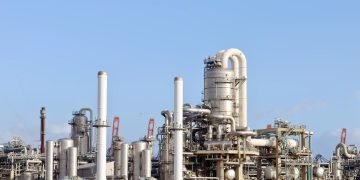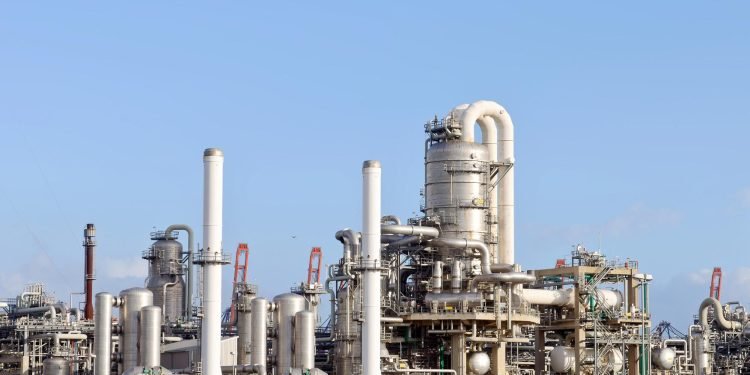By Maria Kalamatas — The Logistic News
It was supposed to be a crowning achievement of energy sovereignty. Instead, Mexico’s first shipment of ultra-low sulfur diesel (ULSD) from its new Olmeca refinery has headed not to domestic markets, but to foreign shores.
In early April, the Danish-flagged tanker Torm Singapore quietly sailed out of Dos Bocas, loaded with around 300,000 barrels of ULSD produced at the state-run Pemex facility. The delivery—split between Florida’s Port Canaveral and Puerto Rico’s Yabucoa terminal—marks a key operational breakthrough for the long-delayed refinery. But it also signals that the infrastructure to support the government’s national supply strategy is still very much incomplete.
“We built a refinery faster than we built a way to move its fuel,” a Pemex executive remarked candidly, speaking on background. “This first shipment was less about strategy, more about necessity.”
Promise Meets Gridlock
Conceived under former President López Obrador as a bold move toward energy independence, the Olmeca refinery was designed to process up to 340,000 barrels per day. It officially opened in mid-2022 but has struggled since to reach consistent output, hampered by technical issues and ballooning costs—now estimated at over $16 billion.
Despite its intended domestic focus, Pemex lacked the internal transport capacity to move the new diesel inland. According to internal assessments reviewed by The Logistic News, distributing the exported cargo within Mexico would have required over 1,200 tanker trucks—an impractical scale given current road congestion, fleet availability, and regional security risks.
“This wasn’t a policy failure—it’s a logistics gap,” said Dr. Alicia Herrera, an energy infrastructure researcher at UNAM. “They met the production goal before solving the distribution equation.”
A Calculated Detour
Rather than allow refined fuel to sit idle, Pemex opted for export. From a financial perspective, the move was rational. The global market for ULSD remains strong, particularly in the U.S. and Caribbean, where seasonal demand for cleaner fuels continues to rise.
Still, the optics are delicate. With fuel prices still volatile at home, some critics see the export as a contradiction of Olmeca’s foundational promise.
President Claudia Sheinbaum, newly in office, addressed the issue during a recent press briefing:
“Olmeca is a national asset. But ensuring its efficiency means responding to operational realities—exporting now doesn’t mean neglecting domestic supply. It’s a step in the long game.”
Behind the scenes, her administration is fast-tracking plans to modernize rail lines and revive stalled pipeline projects to support future inland distribution.
Not Just Diesel
While diesel was the refinery’s headline product, Olmeca has also begun producing petroleum coke—used in industrial applications—some of which has already been shipped to India. Production volumes remain low overall; in February 2025, the plant was refining only around 2% of its designed capacity.
Analysts believe that will climb steadily over the next 12 to 18 months if logistical reinforcements take hold.
The Bigger Picture
The export doesn’t undercut Olmeca’s purpose—it exposes what still needs to be built around it.
“Refining is only half the challenge,” said Herrera. “Moving refined products efficiently across a country the size of Mexico is the other half. That’s where the next battle will be fought.”
For now, the sight of Mexican diesel flowing into foreign ports offers both pride and pause. Pemex has proven it can refine. The question is whether Mexico can now deliver—at home.
Maria Kalamatas is The Logistic News’ Latin America energy correspondent. She covers infrastructure policy, public-private supply chain coordination, and emerging trade flows from her base in Mexico City.























